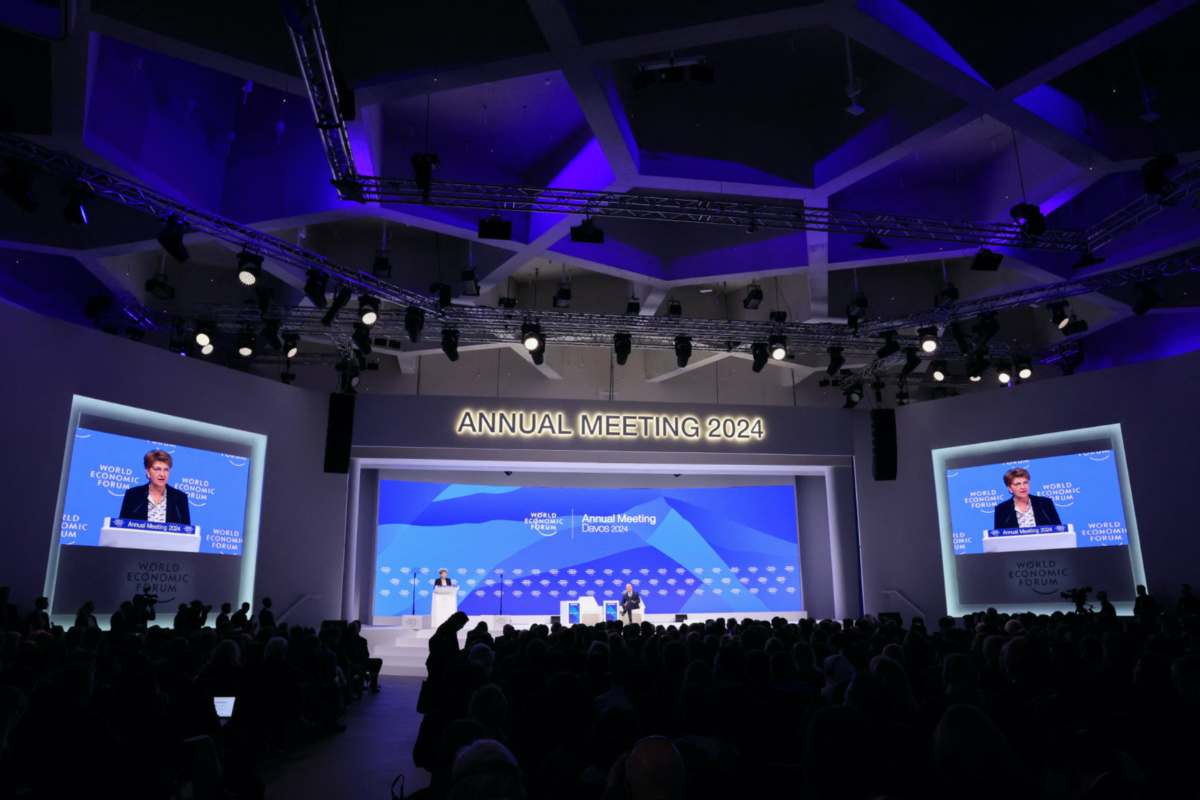London
Thomson Reuters Foundation
The world’s wealthiest one per cent of people own nearly 43 per cent of all global financial assets and emit as much carbon as two-thirds of the planet’s poorest, according to an Oxfam report published on Monday.
Heads of state are joining chief executives, business leaders and other prominent figures this week to discuss pressing global issues -from geopolitical instability and climate change – at the World Economic Forum’s annual meeting in Davos, Switzerland.

Switzerland’s President Viola Amherd speaks during the the 54th annual meeting of the World Economic Forum in Davos, Switzerland, on 16th January, 2024. PICTURE: Reuters/Denis Balibouse
The Oxfam report said:
• Since 2020, the world’s five wealthiest men – including Amazon’s Jeff Bezos and Bernard Arnault, head of luxury goods empire LVMH – have more than doubled their collective fortunes to $US869 billion, a rate of around $US14 million an hour.
• In 2023, billionaires were $US3.3 trillion, or 34 per cent, richer than they were in 2020 when the COVID-19 pandemic hit.
• Seven out of 10 of the world’s biggest companies, such as tech giants Apple, Meta and Tesla, have a billionaire as CEO or principal shareholder.
• Globally, men own $US105 trillion more wealth than women, which equates to more than four times the US economy.
• If trends continue, the world will have its first trillionaire within a decade, but poverty – living on less than $US6.85 dollars a day, according to the World Bank – will not be eradicated for another 229 years.
“Billions of people are shouldering economic pain from the pandemic and inflation from war, while at the same time billionaire fortunes and corporate profits have boomed,” Alex Maitland, one of the report’s authors, told Context.
“These big crises have really supercharged the effect on inequality,” said Maitland, Oxfam International’s inequality policy advisor.
The United Nations International Labour Organization said last week the number of people living in extreme poverty – earning less than $US2.15 a day – grew by about a million in 2023 to reach 241 million globally.
It said an extra two million people will be unemployed due to conflicts, inflation and the higher cost of living, pushing the global unemployment rate from 5.1 per cent in 2023 to 5.2 per cent in 2024.






